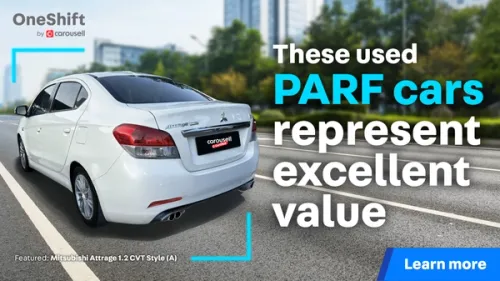Here Is How the New ERP 2.0 Will Change Your Daily Commute!
The ERP system as we know it will be gradually phased out. Here's how its successor will change your daily commute!

The ERP system that we’re familiar with will be gradually phased out come 2020. The current gantry-based ERP system has definitely helped to manage congestion, but technology has come a long way since it was first introduced 20 years ago. It will be replaced by a satellite-based system, with capabilities far more advanced than what the current system currently has. Here’s how the new system will change your daily commute!
Photo Credit: LTA
The In-vehicle Unit (IU) has seen a couple of changes since its inception in the 1990s. The current IU is significantly slimmer and more compact than the ones from yesteryears. It also enables the motorist to use multiple cards (and not just the cashcard!) to make payment for their ERP or parking charges. You can bid farewell to this form factor though; the new In-vehicle Unit, now dubbed on-board units (OBUs), will have a larger screen, and pack even more punch than the present IUs too. Also, according to the LTA, these units incorporate the robust security and controls necessary to enable congestion charging to be carried out in a secure manner.
Which is a nice segway to our 2nd point.
But the current IU has just gotten neater...
The OBUs are significantly more feature-packed than their predecessors. Functionality such as the ability to make automatic payment for an e-Day license for Off-Peak Cars, electronic payment for roadside parking and checkpoint tolls and the real-time traffic information based on GPS location have all been built into the unit. This should mean less hassle (you don’t have to manually go online to purchase your e-Day license for instance!) on your daily drives!

At the present, motorists are charged a flat fee to gain access to congestion hotspots. The new Global Navigation Satellite System (GNSS)-based ERP system will mean that that will be a thing of the past; motorists will instead be charged by the distance they travel along congested roads.
Existing IUs will be replaced with the new OBUs from 2020. The first replacement will most probably be done free-of-charge, but we’ll have to wait for more information from the LTA. Both systems will co-exist during the transitional period of 18 months, as the relevant authorities roll out the new system and start phasing out the old one. ERP gantries will be dismantled progressively, but until the new system is fully ready, charges will still be on a per-entry basis.
Credits: Jek Ray Low


Get the Best Price for your used car
from 500+ dealers in 24 hours

- Convenient and Hassle-Free
- Consumer Protection
Transparent Process
With No Obligation








